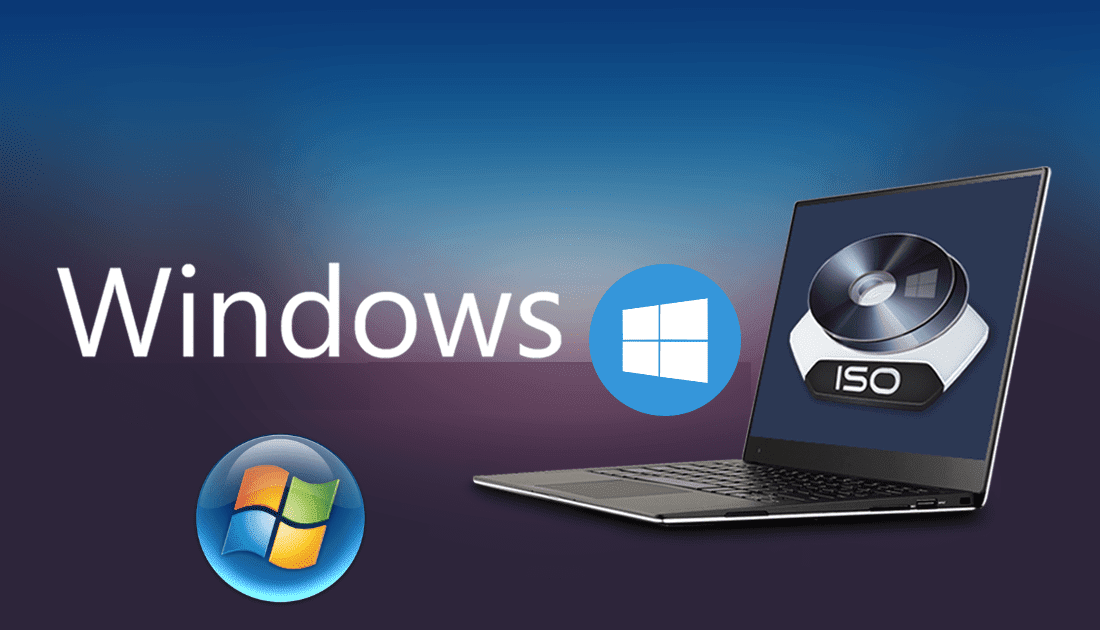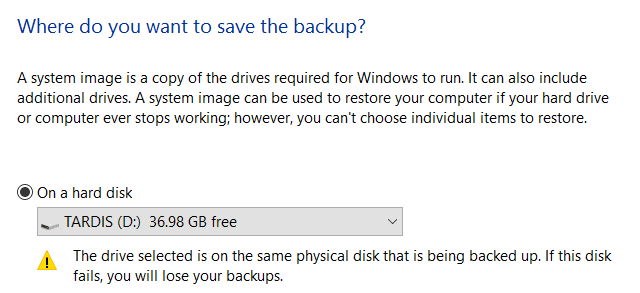How to Make a Windows 7 Startup Disc
Backup Tools Built in Windows is very good. Let's take a look at how Create a backup image Complete for your PC without the need to Third party utility.
get up Regular backup apps , such as CrashPlan or a feature"File Historyincluded with Windows, essentially copies your files to another location. A system image backup, on the other hand, is like making a full snapshot of your entire hard drive. The advantage is system image In that, if a hard drive fails, you can replace it, restore the image, and return the system to the way it was when the image was taken. no need To reinstall Windows or your applications.
Do you need a quick and easy way To backup and restore Windows Without relying on backup tools or the cloud for your personal data?

Many third-party backup and restore tools are available for Windows, but they can be complex and time-consuming to use. So why not learn how to create an ISO image for your Windows PC instead?
- Why should you choose to create a full backup on Windows 10?
- Create a full Windows 10 ISO image with DataNumen
- Create a full ISO image of Windows 7
- Also, make sure that the system drive (by default the C: drive) is selected.
- Restore a system image on Windows 7
- Create a system ISO image in Windows 8.1
- Restore a system image on Windows 8.1
- Backup your Windows PC with an ISO image
Why should you choose to create a full backup on Windows 10?
We all know that backing up our data is important, especially when Upgrade to a new version of Windows. But instead of messing around with specific bits of specific data or syncing them to the cloud, why not simply back up your entire Windows?
You can add personal folders to your backup, but delete apps and games. Alternatively, you can choose to create an image of the entire system. Naturally, you will need an adequate storage size for such a backup.
Thanks to the ISO image format, it is possible to back up your entire PC. This basically creates an exact copy of the entire drive or selected directories. You will be able to restore the full backup image in the event of a disaster.
Create a full Windows 10 ISO image with DataNumen
One common use of ISO images is to create a copy of your hard storage (hard disk drive or solid state drive), which may be in its final stages.
Prepare DataNumen Disk Image (eg "DDKI") is one such solution, it runs on all versions of Windows and is freely available.

After downloading and installing the utility, use the tab Clone to select the drive for which you want to create an image; To clone multiple drives, use the tab Batch Clone.
Locate the destination and set a file name in the box Output image file as , where you must select the target drive. Which is the option that will be the place you will use to save the backup. It could be an external drive, or a hard drive that you recently purchased.
Click Start Cloning. This will allow the data to be copied to the destination drive.
Create a full ISO image of Windows 7
Although cloud backups are easy, there is no reason not to create a system ISO image for disaster recovery scenarios. Where you can create an image of the system in its current good state. Alternatively, you can create an image of the newly installed operating system. This may include some of the apps and games you have installed for easy future reinstallation.
If you're using Windows 7, backing up a system ISO image is part of the Windows 7 Backup and Restore feature.
To create a system image in Windows 7, open Start -> Getting Started -> Backup Files. In the right pane, clickCreate a system image , and select the destination.

The destination might be an external hard drive or some other large volume. You can also write to DVD (you'll need more than one) or Blu-ray.
Do you have home servant , or a large amount of storage space on your network, perhaps in the form of NAS It was bought? If so, you can use the option "On a network location. If you want to use USB flash device , connect it to your computer previously and choose it as the destination.
Also, make sure that the system drive (by default the C: drive) is selected.
The confirmation screen will detail how much space will be occupied by the backup. Select this option to make sure it matches the remaining space on the target device. Proceed with the backup and wait for it to complete. The duration depends on the size of the backup and the speed of writing to the drive.
Restore a system image on Windows 7
Once the process is complete, Windows will suggest that you create a system restore disk. This is a good idea, so find a blank disc and follow the instructions. You can then use this disk to boot your computer to it and select the System Image Recovery option to restore the system ISO image of your Windows installation after a catastrophic scenario.
Create a system ISO image in Windows 8.1
The same tool for creating a system image is available in newer versions of Windows. You need to upgrade Windows 8 to Windows 8.1 before continuing here.
To find the System Image Creation Tool, press Start and type "File History. Auto search will display File History, so click this option to open the "File History" tool.file record, then pressSave an image to the systemIn the lower left corner.

You can then proceed as detailed in the Windows 7 section above. When creating an ISO backup of your system, use the steps for Windows 8.1, below, to restore the image in Windows 10. In a disaster recovery scenario, you'll need to run the equivalent Safe ModeIn Windows 10 to restore the image.
Restore a system image on Windows 8.1
If the Windows 10 upgrade didn't work for you (you might encounter Replay loop), as creating an ISO image for you to come back to in case of any unexpected error is a huge advantage. You can restore the Windows 8.1 system image in the Windows advanced options screen, which you'll find by pressing the F8 key repeatedly when the computer boots (or pressing the SHIFT key while clicking Restart).
in Advanced Startup Options (Advanced startup options), select Repair your Computer -> System Image Recovery And follow the instructions, making sure that Windows can find the ISO file.
Note that even if you have Windows 8.1 installation media, you can still restore the system image. in screen INSTALL NOW Use the link PC repair Your , Then Repair.
You will be redirected from here to a list "Advanced startup', so select Troubleshoot -> Advanced Options -> System Image Recovery , and follow the instructions to restore your Windows ISO image.
Backup your Windows PC with an ISO image
As you can see, creating an ISO image backup for your entire Windows is ideal for back-ups ahead of time before major system upgrades. Additionally, the speed with which an ISO file can be created and later restored should make it a more attractive option than simply backing up your data and hoping it doesn't make a catastrophic error that prevents you from accessing the simple backup you made.
Once you create your ISO file, you may need to boot your computer with this image after a system failure. Try one of these tools To create a bootable USB from your ISO file or follow this The guide to installing Windows from a bootable USB.
How to Make a Windows 7 Startup Disc
Source: https://www.dz-techs.com/en/create-iso-image-windows-system
0 Response to "How to Make a Windows 7 Startup Disc"
Post a Comment